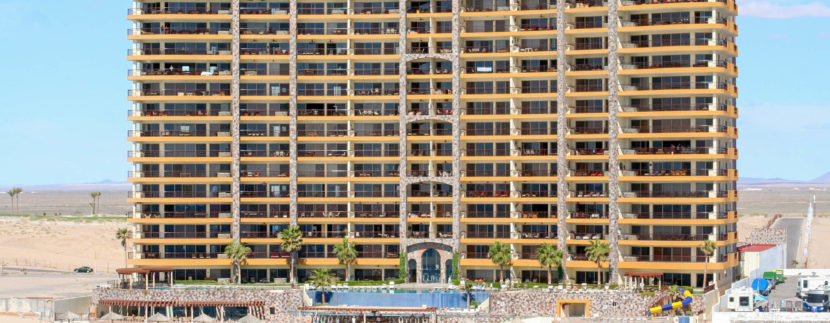The Ultimate Vacation Destination in Our Backyard

Arizona’s backyard, that is.
Most call it “Rocky Point,” but Arizonans call it “Arizona Beach” because a lot of them…. well, beach themselves there because it has gorgeous beaches.
And since it’s cheap, Rocky Point is the go-to spot for spring break. Which is also why you’ll find a lot of American and Canadian retirees there, as well as a growing number of Northern Europeans escaping their god-awful weather.
As to the “backyard” bit, that’s because it’s in Mexico… which explains why it’s a lot cheaper than the US. Puerto Peñasco is only a little more than an hour’s drive from the US border. From Phoenix and Tucson, it’s 210 miles on Route 8 which takes about 4½ hours.
But Isn’t Mexico Dangerous!?>
Yes, but it’s also a big place. While the US State Department has a travel warning against Mexico as an entire country, it considers certain areas to be generally safe. They therefore advise people to enter Sonora (the state that Rocky Point’s in) through the Lukeville-Sonoyta Mexico Border Crossing “to limit driving through Mexico.”
To those in the know, however, it isn’t a big deal. About 20,000 Arizonan college students spent their spring break there in 2011. The year after that, Mexico’s Ministry of Tourism reported a record-breaking 77,000 visitors to Rocky Point alone, and that figure keeps going up.
In January 2016, the US State Department updated its travel warning to Mexico and claimed that Rocky Point doesn’t see high levels of organized crime. Which basically means that it’s as safe (or not) as any other American city, pretty much.
In response to that update, Rocky Point Mayor Ernesto “Kiko” Munro said, “Rocky Point right now is one of the safest places in the Northwestern Mexico… We want to keep it that way.”
Big Changes
And that’s why people are starting to call it Mexico’s Monaco. It’s not actually there, yet, but they have big plans. Because it’s so close, most of Rocky Point’s tourists have been the RV camper types and the students willing to sleep in their own cars, but things have begun to change.
Originally a small fishing village in the 1990s with about 3,000 residents, it became attractive to American and Canadian retirees wanting to stretch their pensions. As of 2015, it has about 62,177 registered residents.
Since it’s so close to the US, and because so many Arizonans spend their weekends there, most locals speak English. Munro has even launched an unarmedtourist police force whose job is to make foreigners feel at home and even give tours and lectures about the city. You see? Rocky Point is no longer a tiny fishing village.
It’s also part of the “Free Trade Zone,” which means you don’t need proof of citizenship, a tourist card (though it’s a good idea to have both), or comply with vehicle importation requirements.
What They Have
Oh, where to begin!? Besides the beaches, complete with world-class 5-star resorts like the Vidanta Puerto Peñasco, they have everything north of the border and more – but for a whole lot less. Remember the Free Trade Zone bit?
College students on spring break hit Playa Mirador for the 2-block street party that goes on for two weeks. If that’s not your thing, there’s Calle 13 with its bars, restaurants, and cafes.
Sandy Beach is the new boomtown with all its high-end resorts, golf courses, condos and houses, as well as more upscale bars, restaurants, and cafes. It’s this bit that’s earning Rocky Point their “Monaco” title, although parts of the old town can still be found.
For many retirees, there’s Las Conchas, an almost exclusively American residential enclave and one of its oldest. Plenty of beachfront rental homes, too. They were originally why Jack Nicolaus built a 19-hole golf course at the nearby Mayan Palace.
And the Best Bit?
They accept US dollars.
The exchange rate changes daily, so they’ll go with that, but you can usually go to a shop and pay with US dollars. It saves you the hassle of going to a bank or foreign exchange shop.
You can also use your ATM card to withdraw cash, but Mexican pesos is what you’ll get. At that day’s exchange rate, of course, though their rates are usually more favorable to the dollar.
They know who butters their bread, after all.
